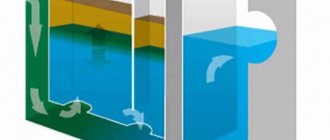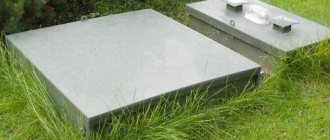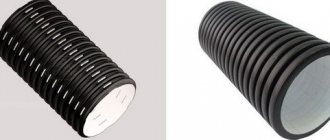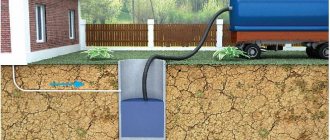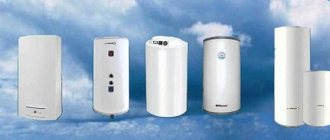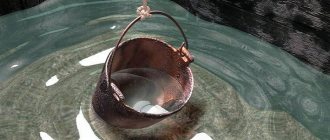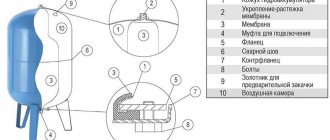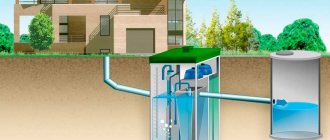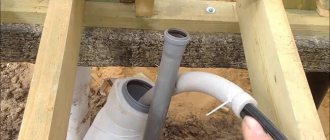11/23/2014 Initially, Eurocubes are intended for use in industry - they store and transport liquids in large volumes.
These can be chemicals like acids, or fuel mixtures, or food products - water, vinegar, vegetable oils, etc. Manufacturers of cubic containers slightly vary their characteristics, polymer composition, dimensions depending on the wishes of the customer and where the Eurocube will be used. But one of the main advantages of these containers is their reliability and long service life - even after repeated use in production, they do not lose their positive characteristics. This is why used Eurocubes have become so popular among private buyers - mainly owners of summer cottages and farms.
The scope of used Eurocubes is very wide, but in any case, a mandatory rule applies - before use, the used container must be thoroughly washed under high pressure of water. It is also not recommended to use Eurocubes in which chemicals were previously transported or stored for drinking water or for watering plants. What can be made from a Eurocube?
Eurocube What it is?
A Eurocube is a special container that has a cubic shape. It belongs to the class of so-called “medium-tonnage containers”. It has a rigid outer packaging with steel lathing and an inner tray that can be made of metal, wood or plastic. The container itself is made of special polyethylene.
The sizes of the Eurocube may vary. There are various specifications of Eurocubes, which differ primarily in the thickness of their walls (from 1.5 to 2.0 mm). On top of the flask there is a special hole in the form of a neck with a diameter of 150 mm. A polyethylene cover is installed on it, which may have ventilation (valve).
A tap is installed at the bottom of the container to drain the liquid. It may have a ball or plunger valve type. Usually the faucet also has a rubber nozzle.
What materials are storage containers made from?
Containers for storing and supplying water are presented on the market in various versions and are made of metal or durable plastic. When buying a container for watering for a long time, you should consider what material it is made of. Modern polymers make it possible to create very durable products with high technical characteristics. They can surpass their metal counterparts in quality and strength.
Metal
Metal storage tank
A tank made of this material is a classic option, familiar to most summer residents. Iron products have been used to store liquids for many years. Everyone who works in the country and uses an artificial storage device made of metal knows about all its disadvantages:
- susceptibility to corrosion;
- rapid contamination;
- difficult care.
It is quite difficult to protect a metal tank from destructive corrosion. To maintain its integral appearance from the outside, it is enough to paint the surface. But inside the water will create a constant impact that destroys the metal. Within a couple of months, sediment will form at the bottom of such tanks. Internal cleaning is a difficult task. The positive side is the good heating of the barrel and its contents under the rays of the sun.
You can maintain the integrity of the inside of the tank by using a plastic lining. This is the only option. However, such an expensive undertaking is not available to everyone.
An alternative solution would be to purchase a stainless steel product that does not have these disadvantages. This also applies to the option with high financial costs.
VIDEO: Irrigation barrel, making a stand
Durable plastic
Purchasing an irrigation tank of 500 liters or more is a reasonable decision, based on the fact that they do not have the disadvantages of metal structures. Such products are made of high-tech plastic, which allows them to withstand heavy loads. Unlike cheap plastic, they are not afraid of temperature changes. Integrity is also maintained under the influence of high water pressure.
Plastic container for watering
One of the main advantages of plastic tanks is their light weight. They are easy to transport and install in the required location. You can install the plastic structure yourself without special equipment.
To prevent the tank from bursting when the water freezes in winter, either drain it completely, or throw a large log or plastic 5-liter bottles inside, which completely cover the surface.
To make a large-volume watering container, it is additionally reinforced with special metal rings. This design makes the final product resistant to water pressure. The next advantage of products made from plastic is price. It is more affordable than metal analogues. The manufacturing technology of plastic containers allows us to offer the buyer containers of various shapes:
- cylindrical;
- rectangular;
- square.
The shape of the container does not affect the quality of irrigation. The main thing is that it succinctly fits into the surrounding landscape and is convenient for installation.
Eurocube
1 cubic meter storage tank where rainwater is drained
The Eurocube has a cubic-shaped structure, reinforced on the outside with a durable metal lattice. The container is installed on a special pallet. This is an excellent option for organizing a drip irrigation system with the addition of fertilizers. It is designed for one cubic meter of water. The design includes a screw-on lid and a tap for draining liquid located at the bottom. To protect against rupture, the same technology is used as described above.
How to calculate the volume of an irrigation tank
If, when making a metal container, you can independently determine the volume in advance - from 1 to 10 cubic meters (the supports may not support a larger volume), then buy a plastic one ready-made. In general, the storage volume depends on the area of the irrigated area. On average, 1 square uses about 30 liters of water per watering. Thus, if the area of the garden or plot is 50 sq.m., then the minimum volume of the tank will be 1.5 cubic meters (1500 liters), and a supply of water must be made.
Gardeners on plots of 6 acres usually install 3-cubic-meter containers, which is enough for a week’s watering.
Installation of watering tanks
All the positive characteristics of tanks for storing and supplying water for irrigating plants are neutralized by poor-quality installation and location. Therefore, it is important to correctly place and install the watering container on the site. The storage tank must be located in a place where rainwater drains. This is the easiest way to replenish this resource without any effort. Rainwater is the most beneficial for plants.
Rainwater storage tank
It is necessary to determine where the barrel will stand:
- underground;
- on a surface;
- on a special platform.
Mounting the product in a suspended state allows you to install a faucet and, by connecting a hose to it, obtain pressure from the water’s own weight. Otherwise, a pump is installed that supplies water from the barrel.
For reference! To create the optimal water column pressure for the required pressure, you need to raise the tank to a height of two meters. This will result in a pressure of 0.2 atmospheres. It is advisable to make it higher, but you need to think carefully about how to make a stable pedestal and how to give it optimal rigidity.
Technical advantages of using a tank for irrigation of a garden
Using a pump to lift water from a well is sufficient to meet household needs. However, their power may not be enough to supply liquid to the planted area. Inexpensive pumps are not able to operate under pressure of 3-4 bar. The pump will operate at its maximum capacity, but will not create optimal conditions for irrigation.
If an irrigation tank is installed on the site, this problem will be solved. Gradually, the pump will pump the required amount of liquid for abundant irrigation of all plants. There is no need to create high pressure to ensure that water from the barrel enters and flows through the hoses. Automatic protection installed on the equipment will turn off the pump when the water runs out.
To protect the pump from constant shutdown or possible breakdown, it is necessary to set a level to which the water will again flow into the tank. You can protect yourself from overflow using a float valve.
If you take water from a dacha directly from a well, it will flow to the plants cold. This has a detrimental effect on their condition and causes the development of various diseases. The liquid passing through the storage tank is heated to ambient temperature, which is optimal for garden crops.
The well may also contain various particles that will be suspended in the water. Their contact with plants is not advisable. Water standing in a tank for several hours will form a sediment at the bottom with all the harmful impurities.
Modern solutions for the production of watering containers
Those who do not want to connect hoses, valves and other equipment to set up an irrigation system should purchase an irrigation container based on the installation of a special equipment system inside the tank. This is a station for supplying heated water under pressure, which is configured for automatic irrigation of plantings.
Heated water supply station under pressure
This set of equipment consists of:
- durable plastic tank;
- powerful submersible pump;
- filters;
- shut-off valve;
- valves;
- automatic water level control systems;
- bottom drain.
Such site irrigation systems have a number of key advantages:
- operate in silent mode;
- provide maximum pressure;
- filter and heat the water;
- control the liquid level in the tank.
With the correct installation of a barrel used for everyday irrigation, the land plot will be fully provided with the resource necessary for caring for garden plants. The main thing is to correctly determine the volume of container required for your needs. It should correspond to the water consumption in your area with a small margin.
VIDEO: Irrigation tank and outlet water pressure
www.portalteplic.ru
What types of Eurocubes are there?
The Eurocube is used for a wide variety of needs that may arise not only in a specific area, but also in everyday life. Depending on what specific goals you set for yourself, you may need different types of such containers. Today, Eurocubes are divided into:
- Containers with a plastic tray.
- Containers with a metal tray.
- Containers with a wooden pallet.
- Containers lined with metal rods.
With plastic tray
With wooden pallet
With a metal pallet
As you can see, the main distinguishing feature of each type is the material that is used to make their pallets, as well as the presence of a metal sheathing.
In addition, there is the following division of Eurocubes:
- Food containers. Designed to store food (oil, vinegar).
- Technical containers. Used for transportation and storage of alkaline and chemical substances.
Organization of watering system
The last step is the organization of direct watering of the plants. There are two most popular methods of watering: sprinkling and drip irrigation. The latter is becoming especially fashionable today. However, we must not forget that not all plants prefer the drip option, as its ardent supporters are trying to convince us of - cucumbers, for example, love sprinkling. In addition, different plants have different watering regimes - some need water constantly, others much less often or in smaller quantities. Consequently, the entire irrigation system is a set of different methods of watering different beds, with an individual regime for each, taking into account the temperature and humidity conditions of the environment. Don’t forget about two more factors: aesthetics - everything should look neat and be easy to use, and mobility - over the years, the plants in the beds change places, this is called crop rotation, so after them, the watering system should migrate to other beds. Despite the apparent complexity, everything is not so scary. We will tell you how to organize all this in the third and final article.
How to use and apply the Eurocube at the dacha?
The main purpose of manufacturing such containers is the ability to transport large volumes of various liquids without any problems. That is why Eurocubes are primarily used in production. But, since these containers are characterized by a long service life, excellent performance, high reliability and quality, the use of Eurocubes in the country has become a fairly common practice. You can use the container for quite a wide range of purposes.
Always rinse the container under running water before use. This is especially true for used Eurocubes. If you want to use a container for storing water (for drinking purposes or for watering plants), then pay attention to what exactly was transported in it before. It is not recommended to use containers that have previously contained chemicals or other similar substances.
Let's take a closer look at the areas in which you can use the Eurocube:
- To collect water. Watering the garden
- For a font or yard shower.
- For a septic tank.
- To store animal feed or as a water trough for livestock.
- For aquaponics.
Today, many owners of country houses use Eurocubes to quickly and easily collect rainwater . When it rains, drops of water will flow freely down the lid of the containers directly inside. The Eurocube for collecting water is a fairly simple and simple device. Moreover, you can use two containers at once, which can be placed on top of each other and placed under the roof of the house.
Of course, rainwater is not suitable for use as food or drink. Even a special mesh that will protect the liquid from dust and dirt will not help you here. But a similar tank of water is suitable for domestic use: watering the garden, washing the car or dishes, flushing the toilet.
Please note that you will be able to collect about a liter of water from one square meter of roof. A water collection container made from a Eurocube is also convenient because it has a special tap, which greatly simplifies the use of the water inside.
An outdoor shower or a font made from a Eurocube will definitely come in handy at your dacha. After all, how you want, after a hot summer day spent in the garden, to plunge into cool water and wash off all the dirt before entering the house. This design will also be useful for those who are just building a summer house on the site and cannot pamper themselves with tap water. To create a summer shower, you need to build a metal frame and place a Eurocube on top of it, into which water will be supplied. Typically a 1000 liter container lasts for one month.
Do you like saunas? Then you definitely need to build a font from European cups . Despite the fact that this is a fairly cheap option, it will perform its functions 100%. To make such a structure, you need to cut off the top of the container and line it with clapboard.
Don't forget to think about how the water will be supplied and drained.
A septic tank made from a Eurocube has become a fairly popular option among modern summer residents. This can be explained by the fact that this type of sewerage is cheaper and more accessible. To create a septic tank, you need to purchase two or three containers with pipes and taps already provided for water drainage.
Please note that everything must be completely sealed. Install the Eurocubes in a pre-prepared concrete pit.
Don't forget: one of them must be lower than the second. Weld the Eurocubes together. Insulate all sides with polystyrene foam and fill with additional concrete. Before pouring concrete, fill the containers with water. This way they don't become deformed.
A container for storing feed, fertilizer or water for animals can be easily created using Eurocubes. What is very important here is the fact that such containers are created from a special type of polyethylene, which does not enter into any reactions with chemicals. The Eurocube will be no less convenient for garbage disposal .
the aquaponics method is becoming very fashionable . It involves growing plants in water where fish live. This method prevents the accumulation of pesticides and other harmful substances in products.
As you can see, using a Eurocube at the dacha is a fairly effective practice.
Selecting a water source for irrigation
Initially, water can be delivered to the site in two ways:
1. A central water supply system has been installed on the site, through which water is supplied according to a schedule.
Pros:
- the amount of water that can be poured onto your site while it is supplied through pipes is not limited;
- Since the storage, as a rule, is a large metal container heated by the sun, the water already has the optimal temperature for irrigation.
Minuses:
- limited time frame. If you didn’t have time to water while the water was being supplied, then wait for the next session.
2. There is a well on the site from which water is drawn.
Pros:
- you supply as much water as you need, when you need it.
Minuses:
- the water in the well is cold and not suitable for watering plants without preheating;
- There are often cases when there is not enough water in the well to fully meet the entire daily requirement, so you have to save.
Strictly speaking, a third option is also possible - a central water supply with an unlimited supply. In this case, if the water is supplied warm enough, then the storage tank, in principle, is not needed and this article is simply not relevant. If the water in the water supply is cold, then this case is similar to the option of supplying water from a well.
Conclusion: both options, along with their positive aspects, have a number of disadvantages that impose restrictions on their use as a self-sufficient source of water for irrigation. You can get rid of these disadvantages if you equip a storage tank on your site into which water will be pre-filled, in which it will be heated in the sun, and watering will ultimately be carried out from it. How to make such a container and ensure a constant and sufficient volume of water in it will be discussed in this article.
Typical Eurocube sizes
The dimensions of the Eurocube, as well as other similar containers, are standard. If you purchase a container for yourself, you can see all the information about its dimensions at the top. The most common are 1000-liter Eurocubes, so we will list their typical size below:
- Length: about 1200mm (+/- 10mm)
- Width: about 1000mm (+/- 10mm)
- Height: approx. 1160mm (+/- 10mm)
- Volume: 1000 l (but can be 50 l more)
- Weight: approx. 53 kg (+/- 10 kg)
Manufacturers who produce Eurocubes try to strictly monitor the dimensions of the containers. Therefore, during the purchasing process, it will be quite easy for you to decide which one is best for you.
We recommend a plumbing cable for cleaning sewer pipes. detailed instructions
What is the best material to make an adapter for a hose from a Eurocube tap?
Nina, we also once had 5 barrels, but this is still watering with a watering can (in the greenhouse I water with a watering can even now).
But with the acquisition of the cube, we abandoned the barrels, except for one, and we don’t regret it at all. Pull the trigger on the watering gun and move the hose - that’s all when watering, it’s much easier than carrying watering cans, and you can pour out plenty of water. At first, of course, I had to work a little until everything was thought up, bought and done.
As far as I remember, you have a plot across the road from your house, and there is probably no electricity on it. If so, then the cube will have to be raised as high as possible so that the water flows well by gravity, at least by 1.5 meters. Otherwise, the cube will be less useful than the barrels, because... the water in it will warm up more slowly, but you still have to carry it with watering cans and it’s not a fact that the distance will not increase. Barrels can be placed in different places, but a cube cannot be scattered around the area.
. If there is electricity, then a cube + water station will make watering much easier.
Alexander, several years ago - when we were still working - I lived alone during vacation, my husband worked. And I have long asked him to adapt “Malysh” for watering from barrels, but he always has no time. And then there are problems with the spine, and it needs watering. I put together a crosspiece... it’s harder to tell, now I’ll draw it... I drew it. I whipped up this crosspiece quickly, but it can be used. I watered with a hose with a diffuser; there is also a nozzle with a handle, like a watering can. And the youngest son provided water from the well and electricity back in 2011, dug a shallow trench and laid the cable in a corrugation and a metal-plastic water pipe. So we water carrots, cabbage and much more with water from a well; it and the diffuser have time to warm up in the air. I, like Yulia, have a husband who is a “brake on progress,” and my sons also help solve the main problems... My husband’s turnover gets to him. In general, I agree to buy the cube, I just don’t like my husband’s idea to raise it by a meter and a half: you spoke in detail about all the problems associated with this. And the cost of a cube increases to 8-9 thousand rubles. The toad is strangling.
The pump hangs on such a simple cross, I just move it from barrel to barrel.
And this is the end of laying the water supply and cable in the trench. On the left is a well, “decorated” with stump. The trench goes across the road to the garden.
The arrow points to a post on which a moisture-protected socket is mounted and a water pipe is installed.
Is this a counter? I thought - a timer for automatic watering...
This is a barrel in a greenhouse and a Zhuk automatic watering system.
Alexander, these are tubes for drip irrigation. Below in the comments Nina posted this watering system. It’s difficult to say about water consumption, since I use water from the tank for regular watering, using a watering can, and for this purpose the second tap from the tank. And the water is from the tap.
BUG
I found some photos... This is how the hoses are laid and the droppers are installed. And Alexander also asked whether the droppers interfere with loosening? I don’t have to loosen, I mulch the tomatoes with straw, the soil is always loose.
This is summer 2021, I didn’t have time to mulch, we only came for the weekend.
And this is 2021, I spent the summer living in the village - there was straw under the tomatoes, sawdust on the paths.
Why and where are they used?
[rek_custom2] These tanks are multifunctional and can be used not only by large production enterprises, but also by ordinary summer residents. The second name for the Eurocube is IBC container. They called it this way because the main purpose is to transport liquid substances, which can be either ordinary or aggressive. There are no analogues of these plastic containers that would be more convenient and would allow storing and transporting bulk and liquid substances.
The tank, which has a volume of 1000 liters, can be used not only by large companies for their own purposes, but also by ordinary people. For example, to arrange your life in a private house. The Eurocube plastic tank is very durable and very light, is not affected by even the most aggressive chemicals and can successfully withstand any weather conditions. All these advantages are achieved using the blowing method or otherwise rotomoulding.
Containers can be reused. But it should be taken into account that if harmful chemicals were previously transported in it, then it cannot be used for all purposes. In any case, the remains of harmful substances are ingrained into the plastic and can cause harm to health, even if, for example, you water the garden from such a Eurocube. At the same time, if previously an ordinary harmless liquid or ordinary water was transported in a container, then it can be used for domestic needs. There are also companies that can wash and steam Eurocubes of any size from 1000 liters or more.
Eurocube
Accordingly, depending on the purpose, there is no need to buy a new container. The cost of a used plastic cube will be much less, and the effect will be almost the same. If you buy a new plastic container, the price will be high.
What should you consider during installation?
Both during preparatory activities and during the installation of such a cleaning device, several general and specific rules must be observed.
- Any local waste disposal station must be located on site in accordance with regulations. The distance from the house to the septic tank must be at least 5 m, from drinking underground sources - 50 m, from surface water - 30 m, from trees and shrubs - 3 m.
- In addition to sanitary standards, it is also necessary to take into account the possibility of a sewage truck approaching the station to pump out the resulting sludge.
- When building a cesspool, care must be taken to install a ventilation riser.
- It is better to install containers on a concrete base, which has metal eyes for securing the containers with cables. This will save the septic tank from floating.
- When preparing a pit and trenches for pipes, the freezing point of the soil must be taken into account. Pipelines and their inlets must pass below this mark.
- It is recommended to additionally insulate the containers.
- When choosing tanks, you need to take into account that the tanks should not be as full as possible, otherwise cracks may appear in the walls under pressure.
In connection with the last factor, it is important to correctly calculate the volume of the septic tank.
Which drainage pump to choose for the sewage system of a private house, and how to install it? You can read about the advantages and disadvantages of plastic drainage wells in this article.

